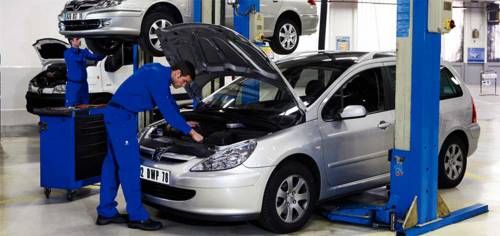Today, cars are furnished with a vast array of security functions, from basic seatbelts to innovative chauffeur support systems. In this short article, we'll discover the evolution of automobile safety and security functions and exactly how these innovations have made driving much safer for every person on the roadway.
The Birth of Auto Security: Seat Belts and Early Developments. The story of auto safety begins with the creation of the seat belt. It wasn't till the 1950s that safety became a focal point for cars and truck producers.
In the adhering to decades, the automobile sector began to focus a lot more on passenger defense. The intro of crumple zones, areas of the automobile made to take in and dissipate the power from an accident, ended up being extensive in the 1970s. These areas, incorporated with more powerful safety and security cages and reinforced structures, made vehicles more secure during collisions by reducing the force on travelers.

The 1980s and 1990s: Airbags and Anti-lock Brakes. By the 1980s, air bags began to become a crucial safety and security feature. At first, airbags were installed for the motorist and front guest, providing an extra layer of security in the occasion of a crash. Gradually, side-impact air bags, drape airbags, and knee airbags were introduced, supplying more thorough security for all passengers of the lorry.
The 1990s also brought the arrival of anti-lock stopping systems (ABS), which aided avoid the wheels from locking throughout heavy braking. This function substantially improved steering control and aided motorists prevent mishaps by reducing the opportunities of skidding. By the end of the 1990s, numerous automobiles were likewise geared up with electronic security control (ESC), which helped drivers preserve control in slippery problems by automatically readjusting the brakes and engine power.

The 2000s and 2010s: Advanced Driver Aid Systems (ADAS) As innovation advanced, the 2000s and 2010s saw the growth of a whole brand-new classification of security attributes-- sophisticated chauffeur support systems (ADAS) These systems make use of sensors, cams, and radar to help motorists in stopping mishaps. Attributes such as lane departure caution, flexible cruise control, and blind-spot discovery started to show up in vehicles, supplying an added layer of recognition for motorists.
Maybe among one of the most impactful ADAS modern technologies is automated emergency situation braking (AEB) This function can identify a possible crash and instantly use the brakes if the motorist does not act in time. AEB has been verified to minimize rear-end accidents and is currently a conventional function in several new lorries.
Other significant improvements include vehicle parking sensors, rearview electronic cameras, and cross-traffic alerts, all developed to aid chauffeurs navigate even more safely in complicated settings. These innovations intend to avoid accidents before they take place, supplying real-time help to prevent collisions and enhance overall driving safety and security.
The Future: Autonomous Autos and AI Safety. Looking in advance, the future of automobile security is linked to the advancement of autonomous lorries (AVs) and expert system (AI) With advancements in artificial intelligence and real-time data handling, self-governing automobiles are ending up being progressively capable of browsing the roadways without human input. Companies like Tesla, Waymo, and others are making strides towards totally independent automobiles, which can eliminate human error-- the leading reason of crashes-- completely.
Current semi-autonomous systems, such as Tesla's Auto-pilot and GM's Super Cruise, currently use hands-free driving assistance on freeways, with built-in precaution like flexible cruise control, lane-keeping assist, and emergency stopping. In the future, AVs are expected to incorporate advanced safety functions, such as vehicle-to-vehicle (V2V) interaction, where cars and trucks can "talk" to every various other to share info regarding roadway conditions, web traffic, and possible hazards.
In addition, the duty of AI in car safety will certainly proceed to grow. AI-powered systems can evaluate large amounts of information in genuine time, making decisions much faster and a lot more precisely than human drivers. This will likely bring about also smarter safety systems capable of protecting against accidents before they occur.
Verdict: A More Secure Roadway Ahead. The development of automotive security attributes has made amazing strides considering that the introduction of the seatbelt. Today's lorries are equipped with a wide variety of modern technologies created not just to shield travelers in case of a crash yet to stop crashes from happening to begin with. As we look toward the future, the combination of self-governing automobiles and AI innovation promises also higher safety and security renovations. With these innovations, we are approaching a world where roadway safety is significantly boosted, and crashes are decreased. The development of auto safety features is a recurring journey, however one thing is clear: the future of driving is safer than in the past.
Navigation
Latest Posts
Your Next Hyundai is at Modern Hyundai
A Guide to Preserving Your Land Vagabond for Durability and Efficiency
The Future of Land Rover: Sustainability and Electric Autos